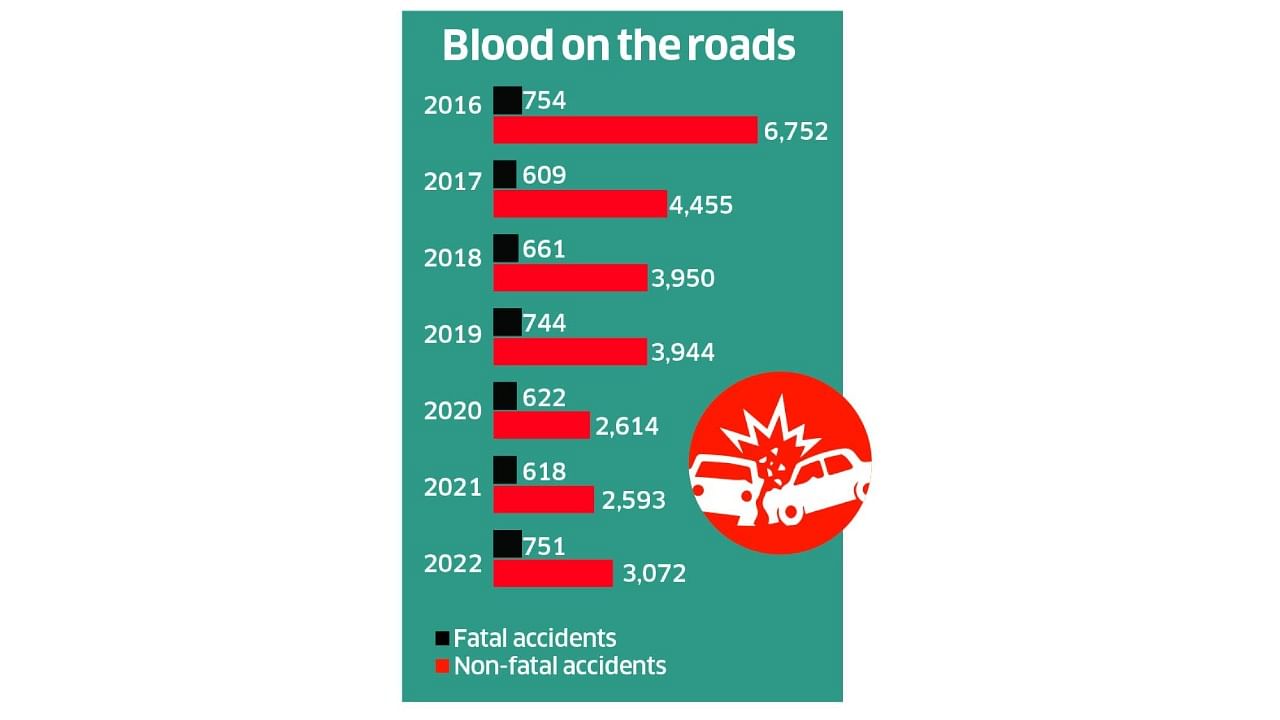
The total number of accidents in Bengaluru has seen a steady decline over the years but the number of people dying on the roads has remained roughly the same, data shows.
Data from Bengaluru Traffic Police indicates that although the number of accidents has nearly halved from 2016 to 2022 (7,506 vs 3,823), the number of reported fatalities has remained consistently high.
In 2022, as many as 751 fatal accidents were reported, very close to the number of fatal accidents in 2016 (754) despite the fall in overall accidents. In 2016, 10.04% of the total accidents were fatal, whereas 19.64% of the total accidents were fatal in 2022, indicating that a greater percentage of accidents over the years is proving fatal for road users.
A senior police officer noted that the major reason for this discrepancy between total accidents and fatalities was the under-reporting of all crashes and minor skirmishes on roads.
“If there are minor accidents with no injuries or vehicle damage, people do not file an FIR and rather come to a settlement or compromise by themselves. This is not the case with fatal accidents, all of which need to be reported,” he said, adding that the true figures of accidents in the city could, in reality, be much higher.
Another reason for the discrepancy is the increase in vehicle density on most roads in the CBD (central business district), which contributes to slowing traffic and fewer incidents of significant accidents.
M N Anucheth, Joint Commissioner of Police (Traffic), noted that the majority of these fatal accidents occurred at very high speeds on highways, expressways and elevated corridors in the city.
Most of them involve pedestrians and two-wheelers who either do not wear helmets or use non-ISI-certified helmets, thus becoming more vulnerable to deaths. In 2022 itself, 696 deaths were reported involving pedestrians, cyclists, two-wheeler riders and pillion riders.
Over the last year and a half, the traffic police have been working with various stakeholders and experts to study trends emerging and understand the reasons behind such an occurrence.
“The ultimate aim is to reduce the loss of human life on the roads. The total number of accidents is under-reported as the primary source for such data collection is the police station, where many people do not file cases. Therefore, we must have an integrated accident and injuries surveillance system in place,” stressed Dr Gautham M S, Additional Professor, Department of Epidemiology and Public Health at Nimhans. The report will be released by the traffic police and the transport department in two weeks.
“We are going to use the data to identify traffic blackspots and then implement awareness and re-engineering measures such as installing signages or traffic-calming measures such as rumble strips as needed,” confirmed Anucheth.